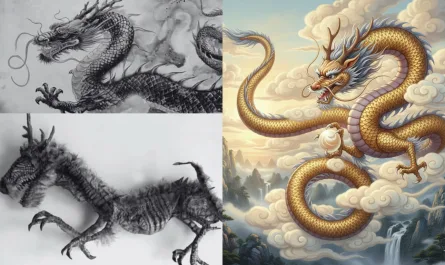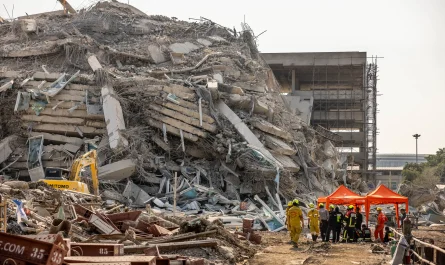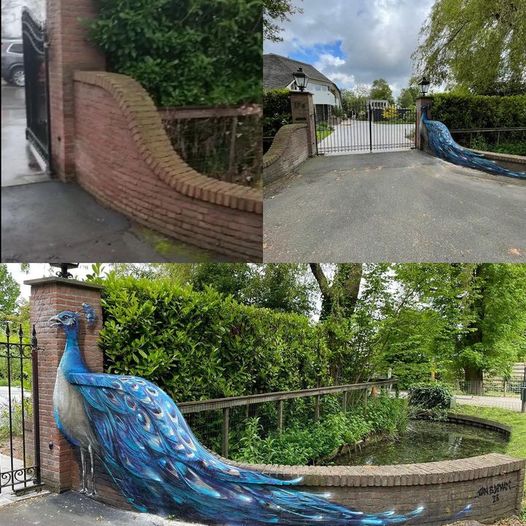Terror on the Niger River: The Mystery of the Giant Crocodile
In a serene village nestled along the banks of the Niger River in West Africa, a wave of terror gripped the community as villagers began to vanish without a trace. Whispers of an enormous creature lurking in the murky waters spread, fueling fear and desperation. Convinced that a monstrous predator was responsible, the villagers called upon military authorities for aid, setting the stage for a gripping confrontation with one of nature’s most formidable creatures.
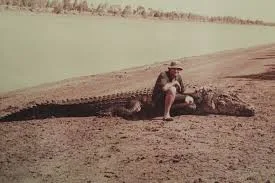
A Village in Fear
The Niger River, a lifeline for countless communities, winds through Mali, Niger, and Nigeria, sustaining agriculture, fishing, and daily life. Yet, in this unnamed village, the river became a source of dread. Fishermen, farmers, and children who ventured near its banks disappeared, leaving behind only ripples and unanswered questions. Elders spoke of a giant beast, a shadow beneath the surface, growing larger with each retelling. The villagers, dependent on the river yet paralyzed by fear, ceased fishing and avoided the water, disrupting their way of life.
The Hunt for the Beast
Responding to the villagers’ pleas, a specialized military team arrived, accompanied by a seasoned wildlife expert. Initial investigations pointed to a Nile crocodile (Crocodylus niloticus), a species known for its size, strength, and occasional attacks on humans. Growing up to 6 meters (20 feet) and weighing over 1,000 kilograms (2,200 pounds), Nile crocodiles are apex predators, capable of ambushing prey with devastating precision. The team suspected an unusually large specimen, perhaps driven by territorial instincts or a scarcity of natural prey, was behind the attacks.
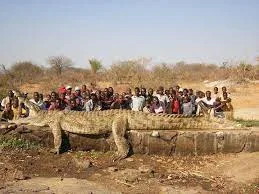
Equipped with nets, tranquilizers, and tracking gear, the team patrolled the river by boat, scanning for signs of the predator. Villagers shared tales of a massive crocodile, its eyes glowing in the moonlight, fueling the team’s resolve. After days of tense searching, they spotted their target: a colossal Nile crocodile, estimated at over 5.5 meters long, basking on a sandbank. Its sheer size and battle-scarred hide confirmed it as the likely culprit.
A Dangerous Capture
Capturing the crocodile was a perilous endeavor. The team devised a plan to lure it into a trap using bait, then subdue it with tranquilizers. As night fell, the operation began, with the crocodile lunging at the bait with terrifying force. After a struggle that tested the team’s skill and courage, they managed to restrain the beast, securing its jaws and limbs to prevent injury to both the animal and themselves. The crocodile, exhausted but unharmed, was loaded onto a reinforced transport vehicle, a moment of relief for the weary team and onlookers.
Restoring Peace and Balance
The crocodile was relocated to a wildlife sanctuary far from human settlements, where it could live without posing a threat. Experts speculated that habitat encroachment or dwindling prey may have driven the crocodile to hunt closer to the village, highlighting the fragile coexistence between humans and wildlife along the Niger River. With the predator gone, peace returned to the village. Fishermen resumed their work, children played by the banks, and the river once again became a source of life rather than fear.
A Lesson in Coexistence
The saga of the giant crocodile left a lasting impact on the village. Community leaders, with support from wildlife authorities, initiated education programs to teach residents about crocodile behavior and safety measures, such as avoiding riverbanks at dusk. The incident underscored the delicate balance between humans and nature, particularly in regions where development and wildlife habitats intersect. The Niger River, a vital artery for millions, continues to host Nile crocodiles, a reminder that respect for these ancient predators is essential for harmony.
The mystery of the giant crocodile, once a tale of terror, has become a story of resilience and resolution, proving that even the most fearsome challenges can be met with courage and understanding.

